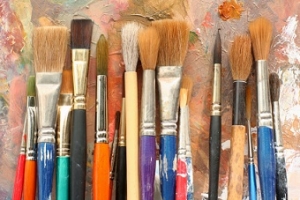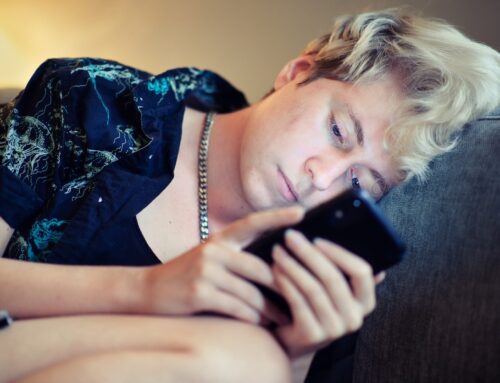 Eating disorders are one of the most complex disorders, and have the highest mortality rate of any other psychiatric illness. What is understood from eating disorders is that there isn’t one exact reason that an eating disorder exists, but many puzzle pieces that may fall into place at one specific time within an individual’s life, which creates the eating disorder. People don’t choose to have an eating disorder. There are many biological, psychological, and sociological factors that play a role in the development of an eating disorder, and recovery from an eating disorder can be difficult, but it is possible to achieve a full and sustained recovery. For someone who does not suffer from an eating disorder, it can be difficult to fully comprehend the multitude of intrusive yet unwelcome thoughts circulating in someone’s mind related to food, body image, and feelings of shame and guilt. The impact of art therapy on eating disorder recovery has been shown to be a powerful tool, which is why Walden incorporates art therapy in its integrative therapies programming.
Eating disorders are one of the most complex disorders, and have the highest mortality rate of any other psychiatric illness. What is understood from eating disorders is that there isn’t one exact reason that an eating disorder exists, but many puzzle pieces that may fall into place at one specific time within an individual’s life, which creates the eating disorder. People don’t choose to have an eating disorder. There are many biological, psychological, and sociological factors that play a role in the development of an eating disorder, and recovery from an eating disorder can be difficult, but it is possible to achieve a full and sustained recovery. For someone who does not suffer from an eating disorder, it can be difficult to fully comprehend the multitude of intrusive yet unwelcome thoughts circulating in someone’s mind related to food, body image, and feelings of shame and guilt. The impact of art therapy on eating disorder recovery has been shown to be a powerful tool, which is why Walden incorporates art therapy in its integrative therapies programming.
What is art therapy?
Many people ask the question, “What is art therapy?” This question, many times is followed with the statements, “I am not an artist” or “I can’t do art.” Art therapy is a mode of communication; it is communication through symbols, colors, textures, and even sometimes glitter. Art therapy establishes communication between people and allows a person to find a sense of clarity or understanding that may be difficult to do by using words alone. Art therapy is able to ask questions about the inner experience, and help people express emotions and ideas that may be difficult to project verbally.
Art therapy may also allow someone to understand a person’s perception or beliefs, allow for self-understanding, or support personal growth. Art therapy simply may allow a place of safety and time for soothing. The finished product may visually not be pleasing, although the art and process of making the art may have been cathartic for the individual. The art may also communicate relevant material for a therapist to work with a client to support change and recovery.
How is art therapy used in eating disorder treatment?
Now, it’s time to express yourself – into recovery. Art therapy’s impact on eating disorder recovery has been shown to support an improved understanding of self, and visually create something that is difficult to verbally explain. Many times it is explained from someone with an eating disorder that there is a lot of internal conflict. How is this relayed or communicated to family, friends, or their peers within a group setting? Art therapy directives ask group members to create art around these internal conflicts, many times revealing to members of the group that they aren’t alone. What a relief it appears to be as others can relate to an internal conflict that previously no one would be able to communicate with words. One example of this may be an art therapy group using masks.
Mask expressing prompt
In this typically powerful group, group members were asked to create a mask expressing, “what do you share with the world and what do you keep within.” Many members of the group were able to discuss their hidden eating disorder, the behaviors which they kept secret, and the fear of recovery or relapse. Group members were able to discuss anxiety and fear of their perceived imperfection, if others were to see the mask as they viewed it from the inside. The masks weren’t perfect, they were powerful. The safe space that the art therapy group created allowed the group members to ‘take off their masks’ and share experiences, goals toward increasing conversation with family members, and to increase the likelihood of using these coping skills to challenge disordered thinking, give and seek support to and from others, and often times, allow a place for recovery to start.
Recovery isn’t perfect and art isn’t either. Art therapy creates a bridge from isolation and distorted thinking patterns to a connection with others, as well as understanding and validation. As simple as it is to put paint, masks, and a few extra materials on the table, the talked about directive led a group into a discussion which is difficult for anyone to have. For people who suffer from eating disorders, art can offer a place of healing or simply an activity of distracting or self-soothing. Art therapy can allow for a time of rest for a busy mind, and for a moment, it can assist in turning the mind from a willful place to a willing and visual perspective toward what recovery may look like – and that it is possible.
There is help
We know finding eating disorder treatment can be tough. Walden is here for you. If you are concerned that you, or a loved one, may have an eating disorder, please reach out by completing the form on this page or email us at intake_coordinators@waldenbehavioralcare.com.
 Nicole Pipitone, MAAT, LPC is currently the lead clinician for the adolescent PHP and IOP programs at Walden Behavioral Care in South Windsor, CT. Nicole received her master’s degree in art therapy and clinical counseling from Albertus Magnus College. In 2012, Nicole found an interest in working with the eating disorder population and began working at Walden in 2013. During this time, Nicole has supported the growth of the adolescent programs for both parents and adolescents through facilitating support groups, psycho-education groups, dialectical behavioral therapy groups, cognitive behavioral therapy groups, and implementing the Family-Based Treatment model.
Nicole Pipitone, MAAT, LPC is currently the lead clinician for the adolescent PHP and IOP programs at Walden Behavioral Care in South Windsor, CT. Nicole received her master’s degree in art therapy and clinical counseling from Albertus Magnus College. In 2012, Nicole found an interest in working with the eating disorder population and began working at Walden in 2013. During this time, Nicole has supported the growth of the adolescent programs for both parents and adolescents through facilitating support groups, psycho-education groups, dialectical behavioral therapy groups, cognitive behavioral therapy groups, and implementing the Family-Based Treatment model.







Thanks for sharing your insights Nicole! People do need that safe and innovative space to health and grow and develop.